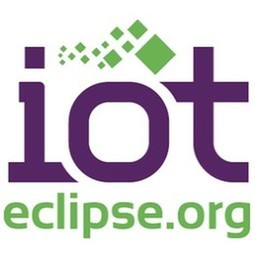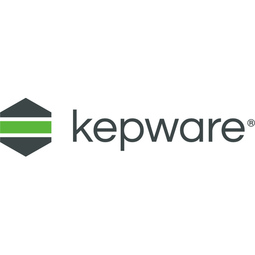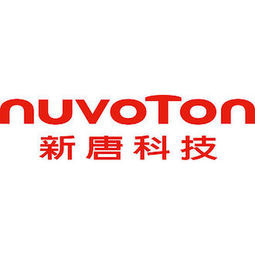Download PDF

Eclipse IoT
Open Source for IoT
Overview
HQ Location
United States
Year Founded
2013
Company Type
Private
Revenue
< $10m
Employees
< 10
Website
Twitter Handle
Company Description
Eclipse IoT is an ecosystem of companies and individuals that are working together to establish an Internet of Things based on open technologies. Eclipse IoT provides the technology needed to build IoT Devices, Gateways, and Cloud Platforms.
The Eclipse IoT Working Group is an industry collaboration of companies who invest and promote an Open Source community for IoT.
The Eclipse IoT Working Group is an industry collaboration of companies who invest and promote an Open Source community for IoT.
IoT Solutions
Open source components for IoT Devices
• Eclipse Edje provides an high-level API for accessing hardware features provided by microcontrollers (e.g GPIO, ADC, MEMS, etc.). It can directly connect to native libraries, drivers, and board support packages provided by silicon vendors.
• Eclipse Paho provides an implementation of the MQTT protocol.
• Eclipse Wakaama provides an implementation of the OMA LWM2M standard.
Integrated IoT Gateway and Smart Devices stacks
• Eclipse Kura provides a general purpose middleware and application Container for IoT gateway services.
• Eclipse SmartHome provides an IoT gateway platform that is specifically focused on the home automation domain.
• Eclipse 4diac provides an industrial-grade Open Source infrastructure for distributed industrial process measurement and control systems based on the IEC 61499 standard. 4DIAC is ideally suited for Industrie 4.0 and Industrial IoT applications in a manufacturing setting. The IEC 61499 standard defines a domain specific modeling language for developing distributed industrial control solutions by providing a vendor independent format and for simplifying support for Controller to Controller communication.
IoT Cloud Platform Stack
The IoT Cloud Platform represents the software infrastructure and services required to enable an IoT solution. An IoT Cloud Platform typically operates on a cloud infrastructure (e.g. OpenShift, AWS, Microsoft Azure, Cloud Foundry) or inside an enterprise data center and is expected to scale both horizontally, to support the large number of devices connected, as well as vertically to address the variety of IoT solutions. The IoT Cloud Platform will facilitate the Interoperability of the IoT solution with existing enterprise applications and other IoT solutions.
Cloud stacks
Eclipse Kapua is a modular platform providing the services required to manage IoT gateways and smart edge devices. Kapua provides a core integration framework and an initial set of core IoT services including a device registry, device management services, messaging services, data management, and Application Enablement. The goal of Eclipse Kapua is to create a growing ecosystem of micro services through the extensions provided by other Eclipse IoT projects and organizations.
Eclipse OM2M is an IoT Platform specific for the telecommunication industry, based on the oneM2M specification. It provides a horizontal Common Service Entity (CSE) that can be deployed in an M2M server, a gateway, or a device. Each CSE provides Application Enablement, Security, Triggering, Notification, Persistency, Device Interworking, Device Management.
Open source components for IoT Cloud Platforms
• Eclipse Hono
• Eclipse Mosquitto
• Eclipse Leshan
• Eclipse hawkBit
• Eclipse BIRT
• Eclipse Edje provides an high-level API for accessing hardware features provided by microcontrollers (e.g GPIO, ADC, MEMS, etc.). It can directly connect to native libraries, drivers, and board support packages provided by silicon vendors.
• Eclipse Paho provides an implementation of the MQTT protocol.
• Eclipse Wakaama provides an implementation of the OMA LWM2M standard.
Integrated IoT Gateway and Smart Devices stacks
• Eclipse Kura provides a general purpose middleware and application Container for IoT gateway services.
• Eclipse SmartHome provides an IoT gateway platform that is specifically focused on the home automation domain.
• Eclipse 4diac provides an industrial-grade Open Source infrastructure for distributed industrial process measurement and control systems based on the IEC 61499 standard. 4DIAC is ideally suited for Industrie 4.0 and Industrial IoT applications in a manufacturing setting. The IEC 61499 standard defines a domain specific modeling language for developing distributed industrial control solutions by providing a vendor independent format and for simplifying support for Controller to Controller communication.
IoT Cloud Platform Stack
The IoT Cloud Platform represents the software infrastructure and services required to enable an IoT solution. An IoT Cloud Platform typically operates on a cloud infrastructure (e.g. OpenShift, AWS, Microsoft Azure, Cloud Foundry) or inside an enterprise data center and is expected to scale both horizontally, to support the large number of devices connected, as well as vertically to address the variety of IoT solutions. The IoT Cloud Platform will facilitate the Interoperability of the IoT solution with existing enterprise applications and other IoT solutions.
Cloud stacks
Eclipse Kapua is a modular platform providing the services required to manage IoT gateways and smart edge devices. Kapua provides a core integration framework and an initial set of core IoT services including a device registry, device management services, messaging services, data management, and Application Enablement. The goal of Eclipse Kapua is to create a growing ecosystem of micro services through the extensions provided by other Eclipse IoT projects and organizations.
Eclipse OM2M is an IoT Platform specific for the telecommunication industry, based on the oneM2M specification. It provides a horizontal Common Service Entity (CSE) that can be deployed in an M2M server, a gateway, or a device. Each CSE provides Application Enablement, Security, Triggering, Notification, Persistency, Device Interworking, Device Management.
Open source components for IoT Cloud Platforms
• Eclipse Hono
• Eclipse Mosquitto
• Eclipse Leshan
• Eclipse hawkBit
• Eclipse BIRT
Key Customers
Solair, OmSense, E.ON, Noja Power
IoT Snapshot
Eclipse IoT is a provider of Industrial IoT platform as a service (paas), and application infrastructure and middleware technologies.
Technology Stack
Eclipse IoT’s Technology Stack maps Eclipse IoT’s participation in the platform as a service (paas), and application infrastructure and middleware IoT Technology stack.
-
Devices Layer
-
Edge Layer
-
Cloud Layer
-
Application Layer
-
Supporting Technologies
Technological Capability:
None
Minor
Moderate
Strong
Case Studies.

Case Study
An IoT Software Suite to Connect Products to Customers' Business
Solair started in Italy in 2011 with the observation that enterprise software severely lagged behind consumer software in affordability and simplicity. They have worked with customers in many industries including smart cities, manufacturing, industrial machinery and retail. Solair has recently begun to expand to do business mainly in Japan, Germany and the United States.“There are still many companies that don’t completely understand how to benefit from the potential advantages of connected products and they are looking for ready to use solutions that are quick to implement and bring measurable economic results,” said Martina Casani, Marketing Director, Solair. With a background in enterprise software, Solair now focuses on addressing business needs through end-to-end IoT solutions including an IoT Platform, a suite of IoT software modules and an IoT Gateway. “We started on the software side of IoT, but our customers were asking us for help on the hardware side,” said Casani. “We began to integrate an IoT Gateway in addition to software to help our customers from start to finish as they build an IoT application that collects data from the edge and brings it to the cloud.”

Case Study
Monitoring Industrial Power Distribution
OmSense is a family of products to monitor and manage industrial sensors. Most of these sensors are found in computer centers or production environments with large energy requirements. As Kevin and John developed the product they wanted it to come preinstalled on industrial hardware, with the ability to be up-and-running within minutes of installation
Similar Suppliers.

Supplier
Kepware (PTC)
Kepware Technologies, established in 1995, is a software development company headquartered in Portland, Maine. Kepware develops software solutions for the Industrial Automation Industry that help bridge the communication gap between diverse hardware and software applications. Their products enable informed decision-making from the shop floor to the top floor by providing consistent, reliable data across the enterprise. Kepware only delivers industrial-strength solutions that are designed, tested, and certified to meet the demands of industrial automation applications. They will not release a product until it has successfully passed all stages of our rigorous quality control process. They build, sell, and support the global market from our Portland, Maine headquarters to ensure the highest-quality output.

Supplier
Nuvoton
Nuvoton Technology focuses on development of analog/mixed signal, microcontroller, cloud and computing products and has strong market share in Industrial, Consumer and Computer markets. Nuvoton owns a six-inch wafer fab, featuring customized processes for analog, power and MCU products.

Supplier
ClearBlade
ClearBlade is the Edge Computing software company enabling enterprises to rapidly engineer and run secure, real-time, scalable IoT applications. ClearBlade was built for the enterprise from the ground up to run securely in any cloud, On-Premise and at the edge. ClearBlade enables companies to ingest, analyze, adapt and act on any data in real-time and at extreme scale.Unleash your data at the edge by leveraging local compute, Artificial Intelligence and actionable visualizations while integrating with any enterprise system - all from a single platform. The industry leading ClearBlade Edge delivers the full power of the ClearBlade Platform directly to devices and gateways. The ClearBlade Edge runs autonomously - independent of network connectivity - ensuring resiliency and security. ClearBlade's patented communications-agnostic AutoSync technology guarantees your environment is always up-to-date.ClearBlade is fully extensible with a suite of proven components and integrations to deliver solutions quickly and at scale. ClearBlade empowers you to focus on business results and outcomes. Providing a consistent platform across edge, cloud and On-Premise environments, ClearBlade runs everywhere and connects everything.





